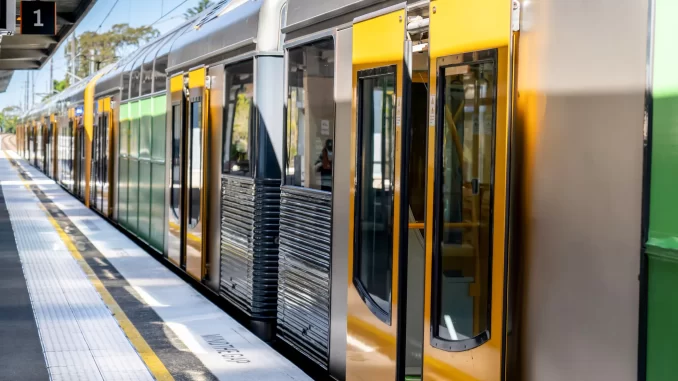
Part of MTA’s Proposed Capital Plan for 2025-2029
By Hank Russell
South Fork officials this week announced that the recently proposed 2025–2029 MTA Capital Plan contains the necessary funding to take the next steps to build the infrastructure to expand the South Fork Commuter Connection (SFCC).
The SFCC was first instituted in 2019 and provides commuters with train service between Speonk and Montauk as an alternative to the long traffic delays from the daily “Trade Parade” on County Road 39 and Montauk Highway. The state has provided the SFCC with $750,000 for “last mile” bus service from the train station to the workplace.
Since the pandemic, the SFCC has been wildly successful with rapidly growing ridership. With a single track, the major impediment to the further expansion of service has been the lack of needed infrastructure on that section of the LIRR’s Montauk line. Last year, as part of its 20-Year Needs Assessment, the MTA unveiled a proposed $260 million capital project to provide improvements to the SFCC’s infrastructure, This includes:
- adding track and crew facilities at the Speonk yard to accommodate three additional train sets
- building a new northside platform and station track at the Speonk station to access the years without blocking the main track line
- building a new south passenger platform at the Hampton Bays station to allow the passing and double berthing of trains
- upgrading, signalizing and reconnecting the north freight track at the Bridgehampton station to the main line to allow the passing and double berthing of trains and adding a new northside passenger platform with a pedestrian overpass
- signalizing the existing siding at the East Hampton station to allow trains to pass and extending the siding to the west to avoid the King Street at-grade crossing
- signalizing the existing siding at the Amagansett station located east of the station
If the 5-Year Capital Plan is adopted, funding will be available to study, plan, design and even begin construction on the necessary improvements.
This spring, South Fork elected officials joined with other local stakeholders including school, business, and other leaders to form the South Fork Commuter Coalition to lobby the MTA to include the South Fork project in the 5-Year Plan.
“The institution of the South Fork Commuter Connection has been a great alternative to the ‘Trade Parade’ for those trying to get to work each morning, saving hours of commute time each week,” Assemblyman Fred Thiele (D-Sag Harbor) stated. “The biggest problem has been the existing one-track infrastructure, which only permits 2 eastbound trains during the morning rush and 2 westbound trains during the afternoon rush. For many, these limited trips are not convenient. The proposed project would allow the LIRR to greatly expand service making the SFCC an option for thousands of additional commuters.”
“Investing in Long Island’s mass transit infrastructure is critical to reducing traffic congestion on the east end of Long Island where the influx of summer tourists leads to gridlocked roads throughout our towns and villages,” added state Senator Anthony Palumbo (R-New Suffolk). “My colleagues and I have fought hard to create and enhance service on the South Fork Commuter Connection to reduce the number of cars on our roadways and give residents access to alternative transportation to and from work. The inclusion of funding for the South Fork Commuter Connection in the MTA’s 5-year capital plan is great news for residents and our local businesses.”
Suffolk County Legislator Ann Welker (R-Riverhead) called he announcement “extremely promising. The inclusion of this funding in the MTA 5-Year Capital Plan is an important next step in the process to add more trains to the South Fork Commuter Connection. The sole complaint concerning the South Fork Commuter Connection from its ridership is that there are not enough trains.”
Southampton Town Supervisor Maria Moore said, “Traffic congestion is a serious issue for our communities. The South Fork Commuter Connection has offered some relief with ridership increasing. However, the current schedule is too limited, and expanded service is urgently needed for daily commuters.”
“The MTA’s incorporation of the South Fork Commuter Connection into its five-year capital plan marks significant progress to improving the rail link to alleviate South Fork’s traffic congestion by improving the rail service between Speonk and Montauk,” Southampton Town Councilman Tommy John Schiavoni added.
East Hampton Town Supervisor Kathee Burke-Gonzalez called these proposed enhancements “a critical lifeline for our community,” adding, “For too long, our employees have faced grueling commutes that can stretch up to four hours roundtrip, creating undue stress and disrupting their quality of life. This isn’t just an inconvenience; it’s an economic barrier to attract and retain the talent our local businesses desperately need. Our small businesses deserve the chance to flourish, and our staff deserve a better commute. These investments prioritize our community’s future and invest in the reliable transportation options that will drive our economy forward.”
“The Long Island Railroad is uniquely positioned to make East Hampton Town a place where people from all walks of life can find rewarding employment,” East Hampton School Superintendent Adam Fine stated. “I am so pleased that the MTA has developed an appropriate capital plan that can expand the positive impact the SFCC has brought to this wonderful area.”
Hampton Bays School Superintendent Lars Clemensen stated, “Inclusion of the South Fork Commuter Connection upgrades in the MTA’s Capital Budget is great news for the region and will strengthen school district’s and other employers’ ability to recruit and retain faculty and staff, which will reinforce our schools’ ability to deliver high-quality educational programs that our communities value. Additionally, improved infrastructure and capacity on the LIRR is a public safety improvement, as drivers and cars come off our increasingly congested roadways. Thank you to the MTA for this inclusion and support for the region.”

